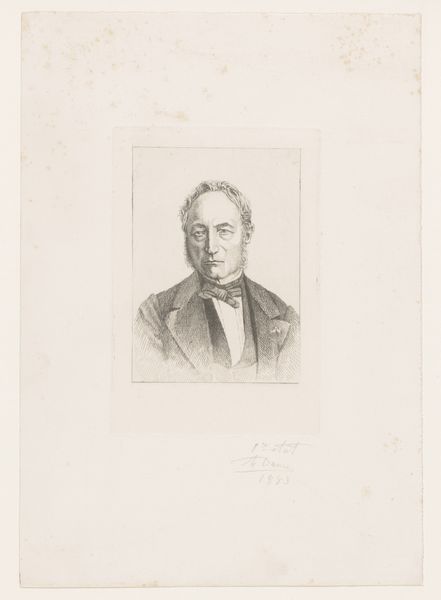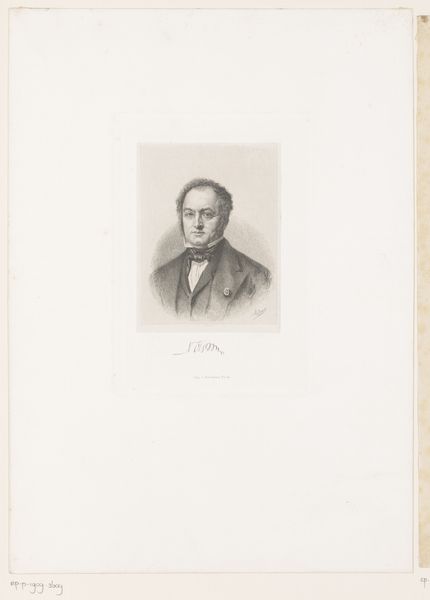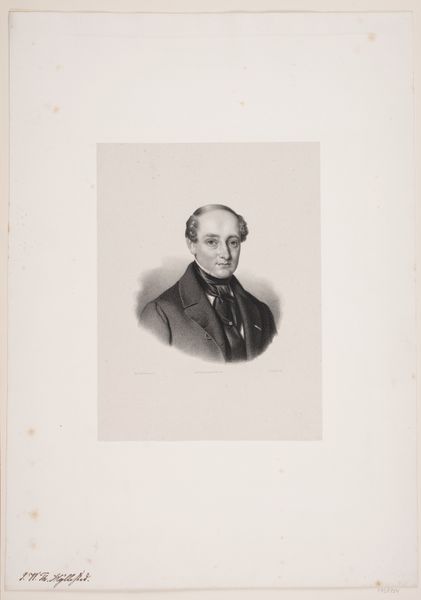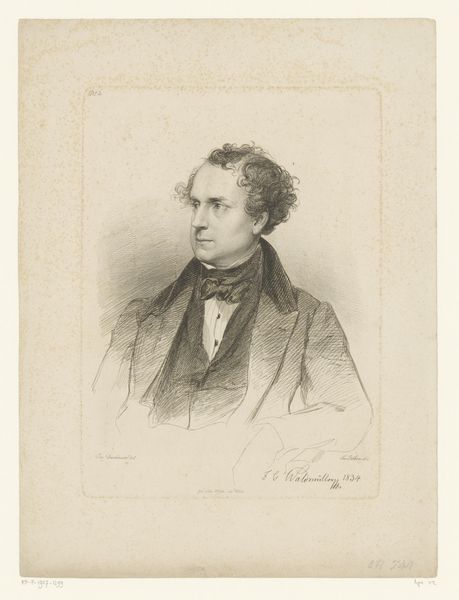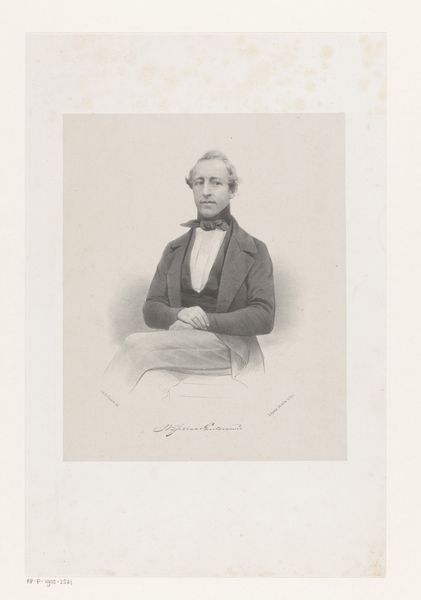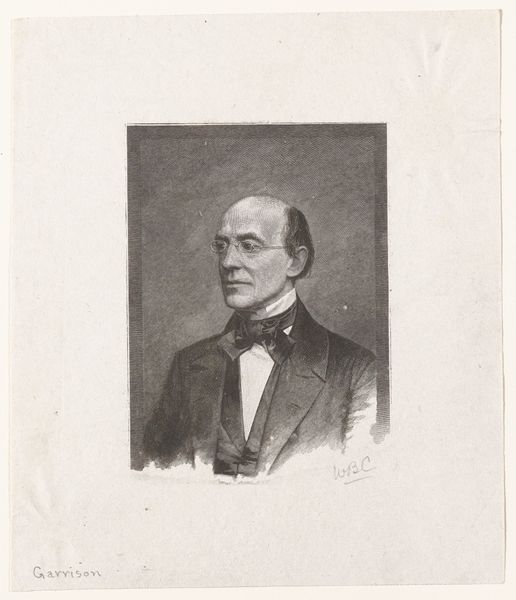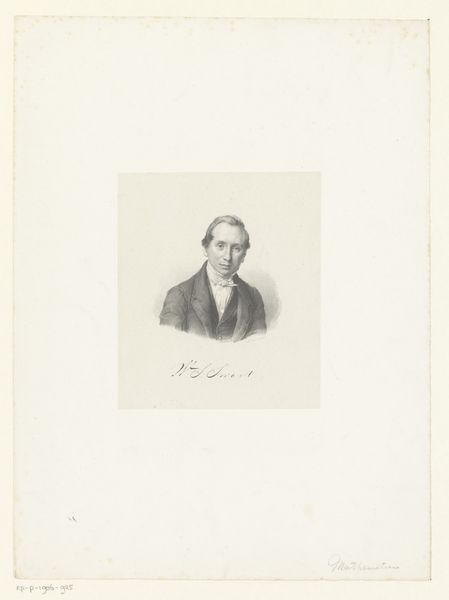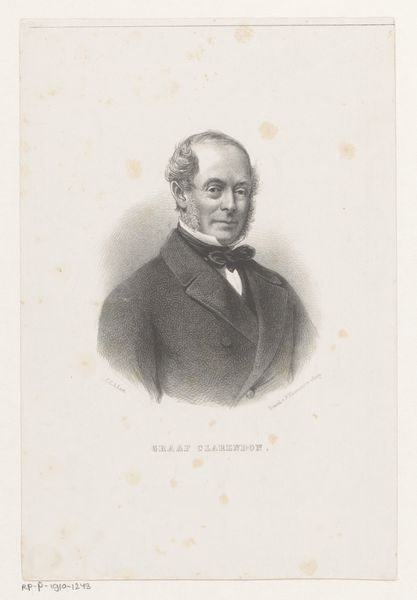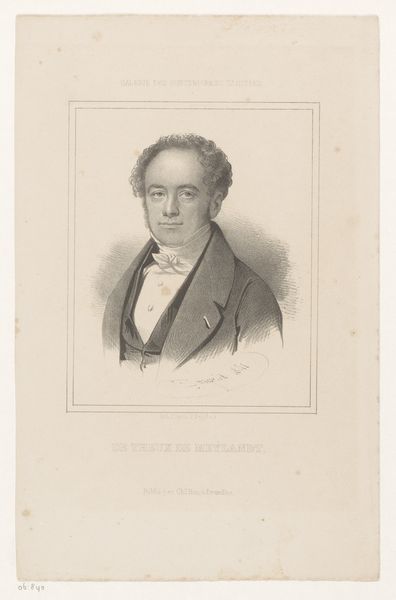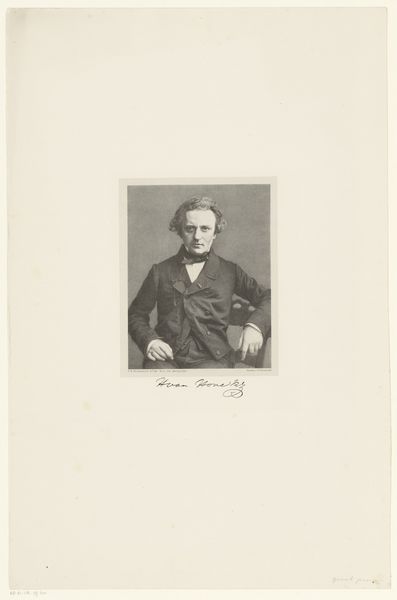
drawing, graphite
#
portrait
#
drawing
#
pencil drawing
#
graphite
#
academic-art
#
realism
Dimensions: height 148 mm, width 100 mm
Copyright: Rijks Museum: Open Domain
Auguste Danse etched this portrait of G. Demoulin in 1882. Consider the subject’s gaze, direct and unwavering, a hallmark of portraiture intended to convey authority and presence. This convention extends back through time, echoing in Roman busts and Renaissance paintings, where the direct gaze was a symbol of power and self-assurance. Yet, the weight of such a gaze is not static. In earlier eras, it might signify divine right or aristocratic privilege. In this later period, it reflects the subject's own merit. Think of the psychological weight it carries. The direct gaze invites scrutiny. It presents the individual as an open book, yet it also challenges the viewer to engage deeply with the subject's persona. Like a persistent echo, this symbol resurfaces, transformed yet familiar. It reflects our continuing need to find meaning in the faces of those who shape our world.
Comments
No comments
Be the first to comment and join the conversation on the ultimate creative platform.
